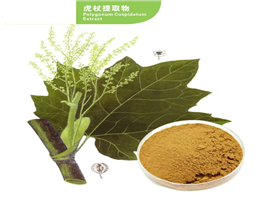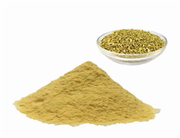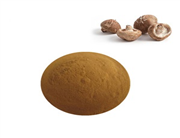Product Name: Giant knotweed Extract
Plant source: Polygonum cuspidatum Sieb. et Zucc.
Active Ingredients: Resveratrol
Appearance: Sandy brown to brown powders, white or almost white powders (Content of Resveratrol≥90%)
Specifications:
- 50%, 90%
- Water-soluble resveratrol of different contents
Test Method: HPLC (External standard method)
Quality Standard: Enterprise standard, USP37, EP7.
What is Giant knotweed?
Fallopia japonica, commonly known as Japanese knotweed, is a large, herbaceous perennial plant of the family
Polygonaceae, native to Eastern Asia in Japan, China and Korea. In North America and Europe the species is
very successful and has been classified as an invasive species in several countries. Japanese knotweed has
hollow stems with distinct raised nodesthat give it the appearance of bamboo, though it is not closely related.
While stems may reach a maximum height of 3–4 m each growing season, it is typical to see much smaller
plants in places where they sprout through cracks in the pavement or are repeatedly cut down. The leaves
are broad oval with a truncated base, 7–14 cm long and 5–12 cm broad, with an entire margin. The flowers
are small, cream or white, produced in erect racemes 6–15 cm long in late summer and early autumn.
Closely related species include giant knotweed (Fallopia sachalinensis, syn.Polygonum sachalinense) and
Russian vine (Fallopia baldschuanica, syn.Polygonum aubertii, Polygonum baldschuanicum).
Other Names of Giant knotweed
Bambou Japonais, Bambou Mexicain, Extrait de Hu Zhang, Fallopia japonica, Fleece Flower, Giant Knotweed,
He Shou Wu, Hu Zhang Extract, Hu Zhang Root, Itadori, Japanese Bamboo, Japanese Knotweed, Japanese
Knotwood, Mexican Bamboo, PCWE, Persicaire Cuspidée, Polygoni Multiflora, Polygonum cuspidatum, Racine
de Hu Zhang, Renouée à Feuilles Pointues, Renouée du Japon, Renouée Japonaise, Reynoutria japonica,
Tiger Cane.
Resveratrol
Resveratrol (3,5,4'-trihydroxy-trans-stilbene) is a stilbenoid, a type of natural phenol, and a phytoalexin produced
naturally by several plants in response to injury or when the plant is under attack by pathogens such as bacteria
or fungi. Food sources of resveratrol include the skin of grapes, blueberries, raspberries, mulberries and Fallopia
japonica.
Resveratrol is naturally occurring phytoalexin produced by some higher plants in response to injury or fungal in
fection. Phytoalexins are chemical substances produced by plants as a defense against in faction by pathogenic
microorganisms, such as fungi. Alexin is from the Greek, meaning to ward off or to protect. Resveratrol may also
have alexin-like activity for humans. Epidemiological, in vitro and animal studies suggest that a high resveratrol
intake is associated with a reduced incidence of cardiovascular disease, and a reduced risk for cancer.
Applications
- Functional food additive & health supplement
- Pharmaceuticals
- Cosmetics & personal care products.


 China
China
